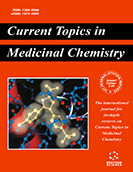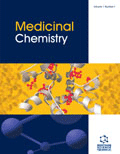摘要
宫颈癌,由宫颈癌引起的癌症,被认为是全球女性第四常见的妇科恶性肿瘤。流行病学报告表明,子宫颈癌是特别是发展中国家妇女的一个全球健康问题,因此在社会中造成了经济和医疗负担。宫颈癌的主要病原体是高危的人乳头状瘤病毒(HPV16和HPV18)。分子研究显示,在HPV感染后,两个病毒基因E6和E7在宫颈上皮细胞中的表达。已知这些基因产物可以分别使主要的肿瘤抑制因子p53和视网膜母细胞瘤蛋白(pRB)失活。此外,自我更新途径的作用,如刺猬、Notch和Wnt,也与癌细胞的耐药性和宫颈癌发病机制中转移过程中的上皮间充质转变有关。虽然HPVE6和E7与上述发育途径的每一个组成部分相互作用的机制尚未阐明,但它们的初步报道已经开始出现。了解这些癌蛋白和发育/自我更新途径之间的相互作用对于设计新的和有针对性的宫颈癌治疗方法非常重要。因此,本文综述了对HPV病毒学的简要描述,确定了HPV的癌变,并建立了癌蛋白E6和E7与刺猬、Notch和Wnt信号通路之间的串扰。
关键词: 宫颈癌,人乳头瘤病毒(HPV),癌蛋白,刺猬,Wnt,Notch
Current Molecular Medicine
Title:A Comprehensive Review on Cross-talk of Human Papilloma Virus Oncoproteins and Developmental/Self-Renewal Pathways During the Pathogenesis of Uterine Cervical Cancer
Volume: 21 Issue: 5
关键词: 宫颈癌,人乳头瘤病毒(HPV),癌蛋白,刺猬,Wnt,Notch
摘要: Cervical cancer, cancer arising from the uterine cervix, has been regarded as the fourth most frequent gynecological malignancy among females worldwide. Epidemiological reports have shown that uterine cervical cancer is a global health issue among women of especially developing countries and consequently creates an economic and medical burden in the society. The main causative agent of cervical carcinoma is high-risk human papilloma virus (HPV 16 and HPV 18). Molecular studies have revealed the expression of two viral genes E6 and E7, after HPV infection in the epithelial cells of the cervix. These gene products are known to inactivate the major tumor suppressors, p53 and retinoblastoma protein (pRB), respectively. Moreover, the role of self-renewal pathways, such as Hedgehog, Notch, and Wnt, has also been linked with drug resistance in cancer cells and epithelial mesenchymal transition during metastasis in the pathogenesis of cervical cancer. Although the mechanism of interaction of HPV E6 and E7 with each and every component of the above described developmental pathways is not elucidated yet, preliminary reports of their cross-talk have begun to emerge. Understanding the interplay between these oncoproteins and developmental/self-renewal pathways is highly important in terms of designing new and targeted therapeutic approaches against cervical cancer. Hence, this review cynosure the carcinogenesis of HPV with a brief description of its virology and also establishes the cross-talk between oncoproteins E6 and E7 and Hedgehog, Notch, and Wnt signaling pathway.
Export Options
About this article
Cite this article as:
A Comprehensive Review on Cross-talk of Human Papilloma Virus Oncoproteins and Developmental/Self-Renewal Pathways During the Pathogenesis of Uterine Cervical Cancer, Current Molecular Medicine 2021; 21 (5) . https://dx.doi.org/10.2174/1566524020666200925160015
| DOI https://dx.doi.org/10.2174/1566524020666200925160015 |
Print ISSN 1566-5240 |
| Publisher Name Bentham Science Publisher |
Online ISSN 1875-5666 |
 27
27
- Author Guidelines
- Bentham Author Support Services (BASS)
- Graphical Abstracts
- Fabricating and Stating False Information
- Research Misconduct
- Post Publication Discussions and Corrections
- Publishing Ethics and Rectitude
- Increase Visibility of Your Article
- Archiving Policies
- Peer Review Workflow
- Order Your Article Before Print
- Promote Your Article
- Manuscript Transfer Facility
- Editorial Policies
- Allegations from Whistleblowers
Related Articles
-
Current Insights into the Role of HIF-1 in Cutaneous Wound Healing
Current Molecular Medicine The Cellular and Molecular Basis of Health Benefits of Grape Seed Proanthocyanidin Extract
Current Pharmaceutical Biotechnology 3-Substituted Isocoumarins as Thymidine Phosphorylase Inhibitors
Letters in Drug Design & Discovery Antiangiogenic Resistance and Cancer Metabolism: Opportunities for Synthetic Lethality
Current Drug Targets Targeting the HIF-1α/Cav-1 Pathway with a Chicory Extract/Daidzein Combination Plays a Potential Role in Retarding Hepatocellular Carcinoma
Current Cancer Drug Targets Xanthohumol: A Metabolite with Promising Anti-Neoplastic Potential
Anti-Cancer Agents in Medicinal Chemistry Preface
Current Proteomics Screening for Infectious Diseases During Pregnancy: Which Test and Which Situation
Current Women`s Health Reviews Carbon Nanotubes: An Emerging Drug Delivery Carrier in Cancer Therapeutics
Current Drug Delivery IP6 in Cancer Therapy: Past, Present and Future
Current Cancer Therapy Reviews MicroRNAs in Lung Cancer and Lung Cancer Bone Metastases: Biomarkers for Early Diagnosis and Targets for Treatment
Recent Patents on Anti-Cancer Drug Discovery Three Amino Acid Derivatives of Valproic Acid: Design, Synthesis, Theoretical and Experimental Evaluation as Anticancer Agents
Anti-Cancer Agents in Medicinal Chemistry Molecular Targeted Therapies in the Management of Head and Neck Squamous Cell Carcinoma: Recent Developments and Perspectives
Anti-Cancer Agents in Medicinal Chemistry Diagnostic Accuracy of Ultrasound for the Evaluation of Lateral Compartment Lymph Nodes in Papillary Thyroid Carcinoma
Current Medical Imaging Molecular Mechanisms and Potential Treatment Targets for Ovarian Cancer by Analyzing Transcriptional Regulatory Network
Letters in Drug Design & Discovery Enzyme / Abzyme Prodrug Activation Systems: Potential Use in Clinical Oncology
Current Pharmaceutical Design Voltage-Gated Ion Channels, New Targets in Anti-Cancer Research
Recent Patents on Anti-Cancer Drug Discovery Involvement of Cytoskeleton in AhR-Dependent CYP1A1 Expression
Current Drug Metabolism Is Type D Personality Here to Stay? Emerging Evidence Across Cardiovascular Disease Patient Groups
Current Cardiology Reviews Receptor Binding Inhibitor Suppresses Carcinogenesis of Cervical Cancer by Depressing Levels of FSHR and ERβ in Mice
Anti-Cancer Agents in Medicinal Chemistry

















.jpeg)








